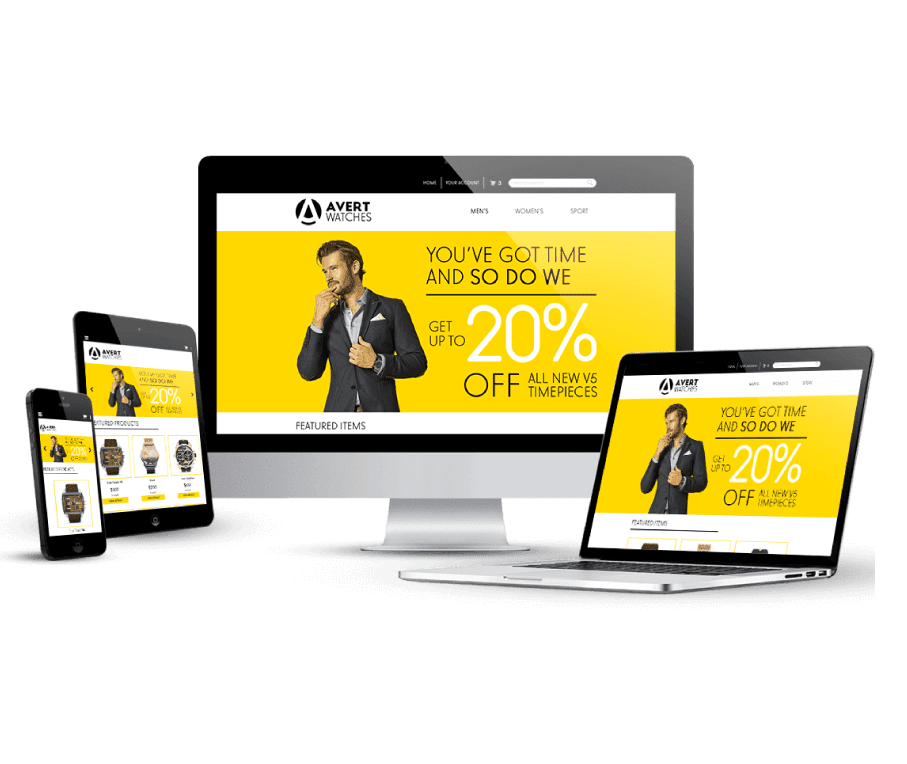Secret Techniques for Implementing User-Centric Web Site Layout to Boost Engagement
When taking into consideration the implementation of user-centric site style, specific techniques are crucial in increasing involvement. Thorough research study right into customer requirements and choices forms the foundation, assisting the production of user personalities to educate style choices. Customizing material improves customer fulfillment, and durable ease of access features widen reach.
Understanding User Demands
Understanding user requirements is a basic action in the process of user-centric internet site design. Techniques such as surveys, interviews, and user screening can give useful qualitative and measurable information about how individuals communicate with the site.
Analyzing this information enables developers to create detailed customer personalities that represent the various sectors of the target audience. These characters assist notify design decisions by highlighting specific user goals and difficulties, assisting the development of functions that attend to these needs effectively. Understanding the context in which individuals operate-- such as their setting, tool preferences, and time restrictions-- can additionally refine the style approach.
Empathy plays a crucial role in this process, enabling developers to see the website from the user's perspective. By prioritizing customer needs, the style process becomes a lot more focused, stopping the inclusion of unnecessary aspects that might clutter the customer experience. Inevitably, a deep understanding of user demands is instrumental in crafting a site that is both functional and significant.
Designing Instinctive Navigation
Having actually developed a comprehensive understanding of user needs, the following step in user-centric web site design involves producing intuitive navigating. Effective navigation is essential to user complete satisfaction, affecting exactly how easily customers can discover details and complete tasks. To attain intuitive navigation, designers should focus on simpleness and clearness, ensuring that the navigation framework is regular and sensible throughout the website.
Organizing material into a clear power structure is crucial. Website Design. Using acquainted labels and icons can lead customers effortlessly, minimizing cognitive lots and improving the general individual experience. A properly designed navigation bar should be prominently put, enabling customers to determine their existing area and quickly explore other sections of the internet site
It is also important to include interactive elements such as breadcrumbs and search functionalities to aid users in navigating facility sites. These attributes provide added paths and improve the accessibility of content, providing to numerous user preferences and habits.
Examining navigating with real users is vital to recognize prospective pain factors and make sure capability aligns with user expectations. Regular comments loops and iterative improvements can aid keep a reliable navigating system that adapts to progressing customer needs, eventually enhancing involvement and fulfillment.
Developing Responsive Interfaces
Usually, creating receptive interfaces is a crucial facet of modern-day web style, ensuring that websites are functional and accessible throughout a wide variety of tools and display sizes (Website Design). This flexibility is critical in a landscape where users access material through smartphones, desktop computers, tablet computers, and laptop computers, each with varying resolutions and orientations. The key objective of receptive style is to enhance user experience by keeping optimum readability and functionality, no matter of the device used
To achieve this, web developers utilize flexible grid formats, fluid photos, and CSS media questions. Flexible grids enable web site elements to resize proportionally, while liquid photos ensure visuals scale suitably without shedding top quality. Media questions play an important function by applying various styles based on the gadget's features, such as orientation, size, and height, thus tailoring the format to the user's screen.
Furthermore, responsive interfaces add to enhanced seo (SEO) by offering a smooth customer experience, which subsequently can decrease bounce prices and boost website involvement. In summary, taking on responsive style is not just a technological consideration yet a necessary method for promoting a user-centric web setting that meets the demands of a varied target market.

Customizing Web Content Experience
Customizing content experience is an important component of user-centric internet site layout that involves customizing web content to fulfill the special preferences and behaviors of individual customers. This approach not just boosts user complete satisfaction but additionally fosters deeper involvement, as visitors are a lot more most likely to communicate with content that reverberates with their needs and interests. By leveraging information analytics and individual feedback, services can recognize patterns and patterns that inform the personalization of web content.
Incorporating customization approaches can range from simple adjustments, such as recommending products based upon surfing background, to extra innovative strategies like dynamic material that adapts in real-time to a user's communications. For example, individualized touchdown pages can dramatically increase conversion prices by supplying users with pertinent info and uses that align this with their previous tasks and choices.
In addition, making use of expert system and artificial intelligence can even more refine content customization by constantly picking up from user behaviors and adjusting to arising patterns. This not just improves the individual's journey however additionally constructs brand loyalty, as customers really feel comprehended and valued. Eventually, individualizing the material experience is an important technique for organizations intending to produce an extra meaningful and appealing interaction with their audience.
Enhancing Availability Features
Enhancing access features is an essential element of user-centric internet site layout, making sure that digital web content is usable by everyone, including individuals with impairments. This strategy not just follows lawful requirements such as the Americans with Disabilities Act (ADA) and the Internet Web Content Availability Guidelines (WCAG) however additionally significantly expands a website's audience reach. By incorporating functions like keyboard navigating, display viewers compatibility, and alternative message for images, web sites come to be more inclusive, supplying a smooth experience for customers with aesthetic, acoustic, or electric motor impairments.
Including responsive design components is important, promoting gain access to on numerous devices and display dimensions, thereby accommodating customers with various choices and requirements. Moreover, contrast ratios and message dimension adjustments can boost readability for individuals with aesthetic difficulties. Giving succinct and clear web content structure, such as lists and headings, help comprehension and navigating, particularly for individuals with cognitive handicaps.
Regular availability audits must be performed to recognize and remedy prospective barriers, making sure ongoing compliance and use. By prioritizing ease of access, businesses not just foster inclusivity but additionally enhance general individual interaction and fulfillment, eventually driving higher conversion rates and strengthening brand name loyalty.

Final Thought
Incorporating user-centric layout strategies significantly enhances web site engagement by focusing on the demands and preferences of users. Detailed study helps with the development of user personas, leading targeted design decisions. User-friendly navigation and receptive interfaces enhance functionality and access across devices. Customizing material based official source on individual behavior boosts fulfillment, while robust accessibility features expand audience reach. Collectively, these techniques create a meaningful on the internet experience, cultivating deeper interaction and interaction with the web site.
Detailed research into customer demands and preferences creates the foundation, assisting the production of customer characters to inform layout selections. Techniques such as studies, meetings, and user screening can give useful qualitative and quantitative information about how individuals communicate site with the web site.
By focusing on customer needs, the design process comes to be extra concentrated, avoiding the addition of unnecessary aspects that could mess the customer experience. Efficient navigating is basic to individual complete satisfaction, affecting exactly how easily customers can find details and total jobs. The usage of familiar tags and icons can assist users effortlessly, minimizing cognitive load and boosting the overall user experience.